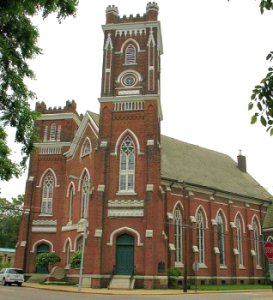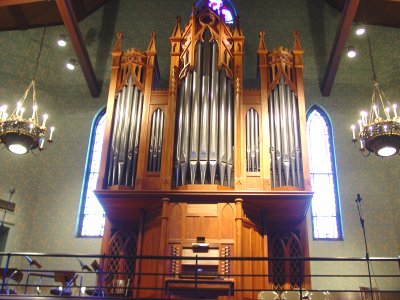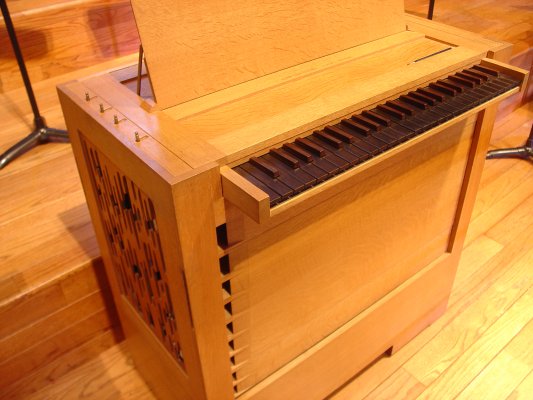Swell to Great
Great to Pedal
Swell to Pedal
Tremulant
Wind Stabilizer
Combination Pedals: Two adjustable
pairs of pedals
("On" and "Off"),
one pair for stops of the right-hand
stop jamb (Great), one for stops
of
the left-hand jamb (Swell &
Pedal).
Wind Pressures:
Great & Swell 3 1/4", Pedal 4 1/4"
Manual key compass CC-a3, 58 notes,
Pedal compass CC-f1, 30 notes
Key Action: Direct Mechanical
("tracker")
Stop Action: Direct Mechanical
|




 Brunzema Portative Organ
Brunzema Portative Organ